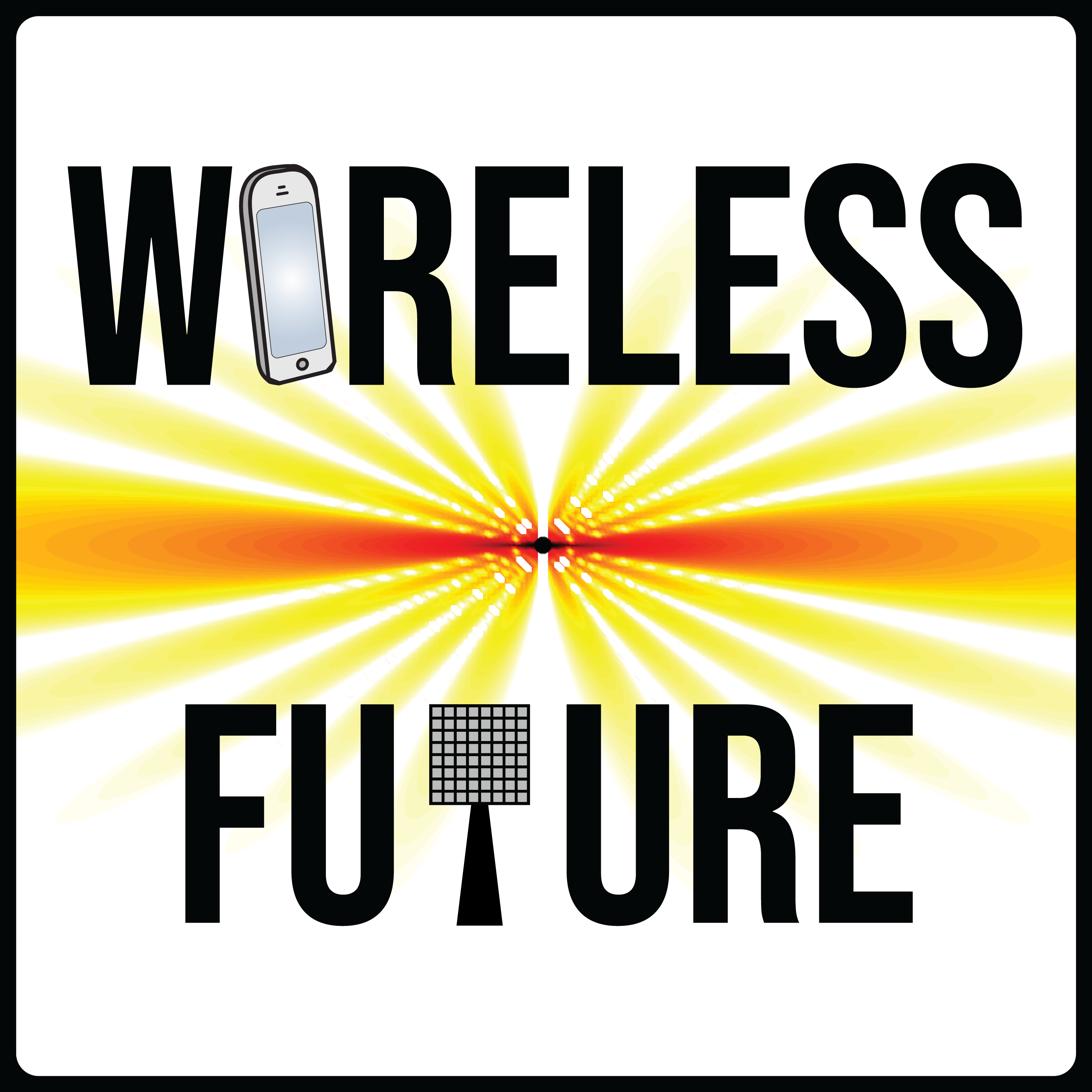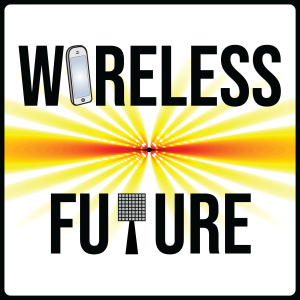
45.9K
Downloads
45
Episodes
We are approaching a wireless future, where everything around us becomes connected and increasingly intelligent. Access to wireless connectivity is becoming as essential to our lives as access to electricity and water. In this podcast, two renowned Swedish academics discuss current and future wireless technology, as well as its impact on society. Erik G. Larsson is an IEEE Fellow and Professor at Linköping University, Sweden. Emil Björnson is an IEEE Fellow and Professor at the KTH Royal Institute of Technology, Sweden. They have written several textbooks, received numerous scientific awards, published hundreds of papers, and have tens of granted patents. They have a YouTube channel with 27k+ subscribers, youtube.com/wirelessfuture
Episodes

Saturday Apr 29, 2023
35. Ten Challenges on the Road to 6G
Saturday Apr 29, 2023
Saturday Apr 29, 2023
The main directions for 6G research have been established and include pushing the communication to higher frequency bands, creating smart radio environments, and removing the conventional cell structure. There are many engineering issues to address on the way to realizing these visions. In this episode, Emil Björnson and Erik G. Larsson discuss the article “The Road to 6G: Ten Physical Layer Challenges for Communications Engineers” from 2021. What specific research challenges did the authors identify, and what remains to be done? The conversation covers system modeling complexity, hardware implementation issues, and signal processing scalability. The article can be found here: https://arxiv.org/pdf/2004.07130 The following papers were also mentioned: https://arxiv.org/pdf/2111.15568 and https://arxiv.org/pdf/2104.15027 Music: On the Verge by Joseph McDade. Visit Erik’s website https://liu.se/en/employee/erila39 and Emil’s website https://ebjornson.com/

Tuesday Jan 24, 2023
34. How to Achieve 1 Terabit/s over Wireless?
Tuesday Jan 24, 2023
Tuesday Jan 24, 2023
The speed of wired optical fiber technology is soon reaching 1 million megabits per second, also known as 1 terabit/s. Wireless technology is improving at the same pace but is 10 years behind in speed, thus we can expect to reach 1 terabit/s over wireless during the next decade. In this episode, Erik G. Larsson and Emil Björnson discuss these expected developments with a focus on the potential use cases and how to reach these immense speeds in different frequency bands – from 1 GHz to 200 GHz. Their own thoughts are mixed with insights gathered at a recent workshop at TU Berlin. Major research challenges remain, particularly related to algorithms, transceiver hardware, and decoding complexity. Music: On the Verge by Joseph McDade. Visit Erik’s website https://liu.se/en/employee/erila39 and Emil’s website https://ebjornson.com/

Wednesday Dec 21, 2022
33. Reproducible Wireless Research
Wednesday Dec 21, 2022
Wednesday Dec 21, 2022
Research is carried out to obtain new knowledge, find solutions to pertinent problems, and challenge the researchers’ abilities. Two key aspects of the scientific process are reproducibility and replicability, which sound similar but are distinctly different. In this episode, Erik G. Larsson and Emil Björnson discuss these principles and their impact on wireless communication research. The conversation covers the replication crisis, Monte Carlo simulations, best practices, pitfalls that new researchers should avoid, and what the community can become better at. The following article is mentioned: “Reproducible Research: Best Practices and Potential Misuse” (https://arxiv.org/pdf/1905.00645.pdf). Music: On the Verge by Joseph McDade. Visit Erik’s website https://liu.se/en/employee/erila39 and Emil’s website https://ebjornson.com/

Tuesday Nov 22, 2022
32. Information-Theoretic Foundations of 6G (With Giuseppe Caire)
Tuesday Nov 22, 2022
Tuesday Nov 22, 2022
Information theory is the research discipline that establishes the fundamental limits for information transfer, storage, and processing. Major advances in wireless communications have often been a combination of information-theoretic predictions and engineering efforts that turn them into mainstream technology. Erik G. Larsson and Emil Björnson invited the information-theorist Giuseppe Caire, Professor at TU Berlin, to discuss how the discipline is shaping current and future wireless networks. The conversation first covers the journey from classical multiuser information theory to Massive MIMO technology in 5G. The rest of the episode goes through potential future developments that can be assessed through information theory: distributed MIMO, orthogonal time-frequency-space (OTFS) modulation, coded caching, reconfigurable intelligent surfaces, terahertz bands, and the use of ever larger numbers of antennas. The following papers are mentioned: “OTFS vs. OFDM in the Presence of Sparsity: A Fair Comparison” (https://doi.org/10.1109/TWC.2021.3129975) , “Joint Spatial Division and Multiplexing”(https://arxiv.org/pdf/1209.1402.pdf), and “Massive MIMO has Unlimited Capacity” (https://arxiv.org/pdf/1705.00538.pdf). Music: On the Verge by Joseph McDade. Visit Erik’s website https://liu.se/en/employee/erila39 and Emil’s website https://ebjornson.com/

Wednesday Jun 29, 2022
31. Analog Modulation and Over-the-Air Aggregation
Wednesday Jun 29, 2022
Wednesday Jun 29, 2022
A wave of digitalization is sweeping over the world, but not everything benefits from a transformation from analog to digital methods. In this episode, Emil Björnson and Erik G. Larsson discuss the fundamentals of analog modulation techniques to pinpoint their key advantages. Particular attention is given to how analog modulation enables over-the-air aggregation of data, which can be used for computations, efficient federated training of machine learning models, and distributed hypothesis testing. The conversation covers the need for coherent operation and power control and outlines the challenges that researchers are now facing when extending the methods to multi-antenna systems. Towards the end, the following paper is mentioned: “Optimal MIMO Combining for Blind Federated Edge Learning with Gradient Sparsification” (https://arxiv.org/pdf/2203.12957.pdf). Music: On the Verge by Joseph McDade. Visit Erik’s website https://liu.se/en/employee/erila39 and Emil’s website https://ebjornson.com/

Monday May 30, 2022
30. The Sionna Library for Link-Level Simulations (With Jakob Hoydis)
Monday May 30, 2022
Monday May 30, 2022
Many assumptions must be made when simulating a communication link, including the modulation format, channel coding, multi-antenna transmission scheme, receiver processing, and channel modeling. In this episode, Emil Björnson and Erik G. Larsson are visited by Jakob Hoydis, Principal Research Scientist at NVIDIA, to discuss the fundamentals of link-level simulations. Jakob has led the development of the new open-source simulator Sionna, which is particularly well suited for machine learning research. The conversation covers the needs and means for making accurate simulations, channel modeling, reproducibility, and how machine learning can be used to improve standard algorithms. Other topics that are discussed are MIMO decoding and technical debt. Sionna can be downloaded from https://nvlabs.github.io/sionna/ and the white paper that is mentioned in the episode is found here: https://arxiv.org/pdf/2203.11854.pdf Music: On the Verge by Joseph McDade. Visit Erik’s website https://liu.se/en/employee/erila39 and Emil’s website https://ebjornson.com/

Wednesday May 11, 2022
29. Six 6G Technologies: The cases for and against
Wednesday May 11, 2022
Wednesday May 11, 2022
The research towards 6G is intense and many new technology components are being proposed by academia and industry. In this episode, Erik G. Larsson and Emil Björnson identify the key selling points of six of these 6G technologies. They discuss the potential for major breakthroughs and what the main challenges are. The episode covers: 1) Semantic communications; 2) Distributed/cell-free Massive MIMO; 3) Reconfigurable intelligent surfaces; 4) Full-duplex radios; 5) Joint communication and sensing; and 6) Orbital Angular Momentum (OAM). The following paper is mentioned: “Is Orbital Angular Momentum (OAM) Based Radio Communication an Unexploited Area?” by Edfors and Johansson (https://lup.lub.lu.se/search/ws/files/4023050/2339120.pdf). Music: On the Verge by Joseph McDade. Visit Erik’s website https://liu.se/en/employee/erila39 and Emil’s website https://ebjornson.com/

Wednesday Mar 02, 2022
28. Ultra-Reliable Low-Latency Communication (With Petar Popovski)
Wednesday Mar 02, 2022
Wednesday Mar 02, 2022
The reliability of an application is determined by its weakest link, which often is the wireless link. Channel coding and retransmissions are traditionally used to enhance reliability but at the cost of extra latency. 5G promises to enhance both reliability and latency in a new operational mode called ultra-reliable low-latency communication (URLLC). In this episode, Erik G. Larsson and Emil Björnson discuss URLLC with Petar Popovski, Professor at Aalborg University, Denmark. The conversation pinpoints the physical reasons for latency and unreliability, and viable solutions related to network deployment, diversity, digital vs. analog communications, non-orthogonal network slicing, and machine learning. Further details can be found in the article “Wireless Access in Ultra-Reliable Low-Latency Communication (URLLC)” (https://doi.org/10.1109/TCOMM.2019.2914652) and its companion video (https://youtu.be/XGbe_ckKKpE). Music: On the Verge by Joseph McDade. Visit Erik’s website https://liu.se/en/employee/erila39 and Emil’s website https://ebjornson.com/

Wednesday Feb 16, 2022
27. Open Air Interface (With Florian Kaltenberger)
Wednesday Feb 16, 2022
Wednesday Feb 16, 2022
Mobile network technology builds on open standards, but it is nevertheless a major effort to implement the required software protocols and interface them with actual hardware. Many algorithmic choices must also be made in the implementation, leading to each vendor having its proprietary solution. The OpenAirInterface Alliance wants to change the game by providing open-source software implementations of the wireless air interface and core network. In this episode, Emil Björnson and Erik G. Larsson are discussing these prospects with a Board Member of the Alliance: Florian Kaltenberger, Associate Professor at EURECOM, France. The conversation covers the fundamentals of air interfaces, how anyone can build a 5G network using their open-source software and off-the-shelf hardware, and the pros and cons of implementing everything in software. The connections to Open RAN, functional splits, and patent licenses are also discussed. Further details can be found at https://openairinterface.org and in the paper “OpenAirInterface: Democratizing innovation in the 5G Era” (https://doi.org/10.1016/j.comnet.2020.107284). Music: On the Verge by Joseph McDade. Visit Erik’s website https://liu.se/en/employee/erila39 and Emil’s website https://ebjornson.com/

Wednesday Feb 02, 2022
26. Network Slicing
Wednesday Feb 02, 2022
Wednesday Feb 02, 2022
In the near future, we will be able to deploy new wireless networks without installing new physical infrastructure. The networks will instead be virtualized on shared hardware using the new concept of network slicing. This will enable tailored wireless services for businesses, entertainment, and devices with special demands. In this episode, Erik G. Larsson and Emil Björnson discuss why we need multiple virtual networks, what the practical services might be, who will pay for it, and whether the concept might break net neutrality. The episode starts with a continued discussion on the usefulness of models, based on feedback from listeners regarding Episode 25. The network slicing topic starts after 10 minutes. Music: On the Verge by Joseph McDade. Visit Erik’s website https://liu.se/en/employee/erila39 and Emil’s website https://ebjornson.com/
